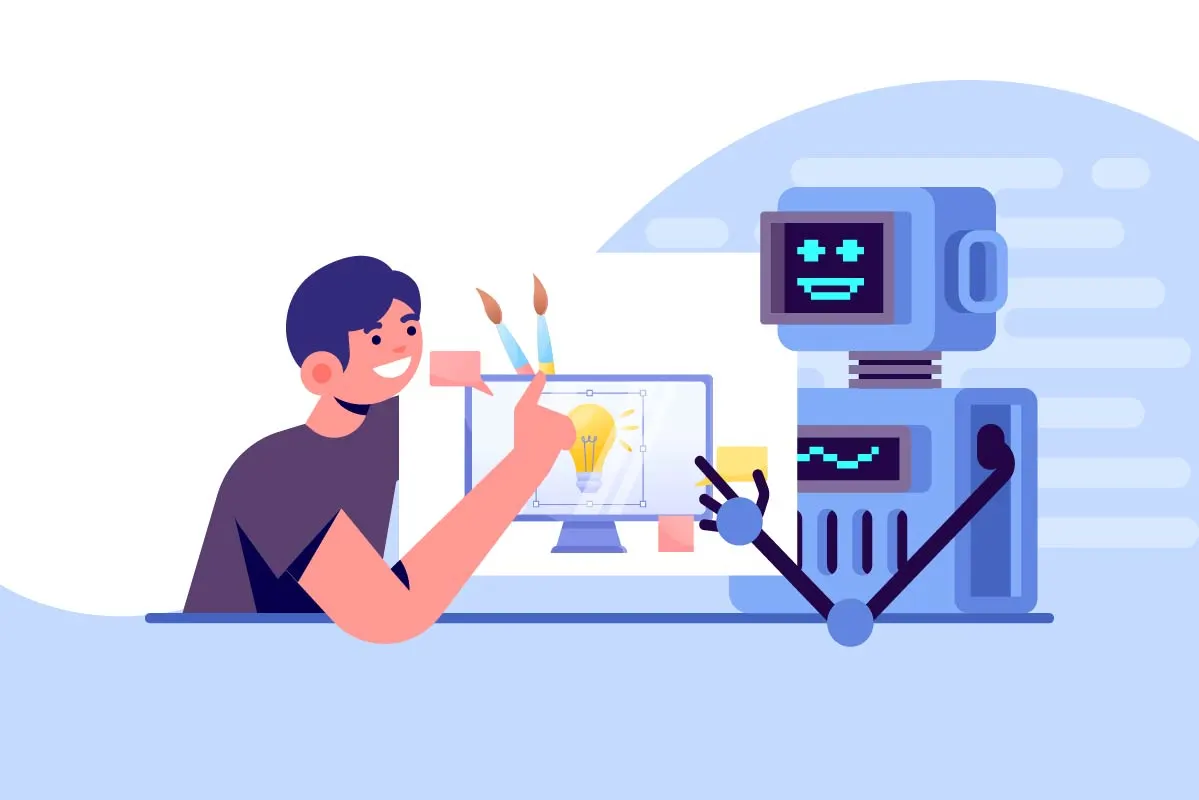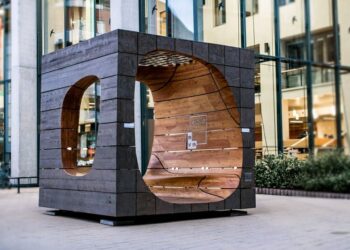Artificial Intelligence (AI) is no longer a futuristic concept confined to science fiction; it’s a tangible force actively shaping the aesthetics of tomorrow. From the subtle refinements in user interfaces to the generation of entirely new artistic forms, AI’s influence on design is profound and rapidly expanding. This article delves into the myriad ways AI is revolutionizing the creative landscape, exploring its current applications, future potential, and the philosophical questions it raises for designers and consumers alike. We’ll examine how AI isn’t just a tool but a collaborator, a muse, and even a disruptor in the evolving world of design.
The Dawn of AI in Design

While the recent explosion of generative AI has brought it into the mainstream, the integration of AI principles into design has a longer, albeit less visible, history.
A. Early Algorithmic Design: The roots of AI in design can be traced back to the development of early algorithms used for procedural generation in video games or for optimizing structural designs in engineering. These rudimentary forms of automation laid the groundwork for more sophisticated AI applications.
B. Expert Systems and Automation: In the 1980s and 90s, “expert systems” began to emerge, aiming to mimic human decision-making in specific domains. While not strictly generative, they automated certain design tasks, such as circuit board layouts or architectural planning based on predefined rules.
C. Machine Learning Era: The advent of machine learning, particularly deep learning, in the 21st century marked a significant leap. AI systems could now learn from vast datasets, identify patterns, and even generate new content that mimicked human creations. This opened the door for AI to move beyond mere automation into true creative assistance.
D. Generative Adversarial Networks (GANs): A pivotal moment came with the development of GANs in 2014. These systems, comprising a “generator” and a “discriminator,” could produce incredibly realistic images, textures, and even entire designs, pushing the boundaries of what was thought possible for AI in artistic creation.
This historical progression highlights AI’s transition from a purely functional tool to a powerful creative partner, capable of not just executing instructions but also generating novel aesthetic ideas.
AI’s Transformative Influence Across Design Disciplines
AI’s impact is incredibly diverse, permeating nearly every facet of the creative industries.
I. Graphic Design and Branding
In graphic design and branding, AI is proving to be a game-changer, offering speed, scale, and unprecedented customization.
A. Automated Logo and Brand Identity Generation: AI tools can analyze brand briefs, target audiences, and existing design trends to generate numerous logo options, color palettes, and typography suggestions in minutes. This dramatically reduces initial ideation time.
B. Dynamic Content Creation: AI can personalize marketing materials, advertisements, and website layouts in real-time based on user data, optimizing for engagement and conversion rates. This allows for hyper-targeted visual messaging.
C. Trend Prediction and Analysis: By analyzing vast amounts of visual data from social media, e-commerce, and design portfolios, AI can identify emerging aesthetic trends, allowing designers to stay ahead of the curve.
D. Image and Video Enhancement: AI-powered tools can upscale low-resolution images, remove backgrounds, colorize old photographs, and even generate realistic stock imagery or video clips, greatly expanding creative possibilities.
E. Generative Typography and Layouts: AI can create unique font variations or propose optimal text layouts for various mediums, ensuring legibility and aesthetic appeal across different devices and platforms.
AI enables graphic designers to operate at a scale and personalization level previously unimaginable, moving from manual iteration to intelligent generation.
II. Product Design and Industrial Design
For product and industrial designers, AI offers capabilities that push the boundaries of form, function, and manufacturing.
A. Generative Design for Optimization: AI algorithms can explore thousands of design permutations for a product, optimizing for factors like material usage, weight, strength, aerodynamics, and cost. This often results in organic, lattice-like structures that are impossible for humans to conceive manually.
B. Material Science and Sustainability: AI can analyze material properties and suggest innovative, sustainable alternatives, or even design new materials with specific performance characteristics, fostering eco-conscious design.
C. Ergonomics and User Experience: By simulating user interaction and analyzing biometric data, AI can inform product shapes and interfaces that are more intuitive and comfortable for human use.
D. Mass Customization: AI-driven manufacturing processes allow for the cost-effective production of highly customized products tailored to individual consumer preferences, from personalized footwear to bespoke medical devices.
E. Predictive Maintenance and Self-Healing Designs: Products embedded with AI can monitor their own performance, predict failures, and even self-repair, influencing the aesthetics of durability and longevity.
AI transforms product design from a linear process into an iterative, optimized, and highly adaptable one, leading to more efficient and user-centric products.
III. Architecture and Urban Planning
In architecture and urban planning, AI is crafting more efficient, sustainable, and aesthetically pleasing built environments.
A. Algorithmic Building Layouts: AI can generate optimal floor plans and building configurations based on site constraints, sunlight exposure, energy efficiency requirements, and user flow, often discovering novel solutions.
B. Facade and Material Optimization: AI can design building facades that adapt to weather conditions, optimize for natural light and ventilation, and even suggest materials that blend harmoniously with the surrounding environment.
C. Smart City Planning: AI analyzes vast datasets on traffic patterns, resource consumption, and population density to propose urban layouts that reduce congestion, improve public services, and create more livable cities.
D. Parametric Design Evolution: While parametric design allows for design changes based on parameters, AI elevates this by suggesting optimal parameter values and exploring design spaces far beyond human intuition.
E. Virtual Construction and Simulation: AI powers simulations that predict how a building will perform under various conditions (e.g., wind, seismic activity, energy consumption) before construction, influencing structural aesthetics and sustainability.
AI’s role in architecture is shifting from drafting aid to a powerful computational engine, enabling architects to design buildings and cities that are not only beautiful but also highly intelligent and responsive.
IV. Fashion and Textile Design
The fashion industry is embracing AI for everything from trend forecasting to bespoke garment creation.
A. Trend Forecasting and Design Inspiration: AI analyzes social media, runway shows, and sales data to predict upcoming fashion trends, informing designers about popular colors, silhouettes, and fabrics. It can also generate mood boards and initial design concepts.
B. Automated Pattern Generation: AI can create patterns for garments based on 3D body scans or desired styles, minimizing fabric waste and speeding up the design process.
C. Virtual Try-On and Avatar Creation: AI powers virtual try-on experiences, allowing customers to see how clothes look on their digital avatars, influencing how brands present their collections.
D. Sustainable Material Innovation: AI can research and suggest new, environmentally friendly fabrics and production methods, promoting sustainable fashion aesthetics.
E. Personalized Garment Design: AI can assist in creating custom garments tailored to individual body measurements and style preferences, ushering in an era of truly personalized fashion.
AI is making the fashion industry more responsive, efficient, and capable of delivering highly personalized aesthetic experiences.
V. User Interface (UI) and User Experience (UX) Design
In the digital realm, AI is paramount for creating intuitive and aesthetically pleasing UI/UX.
A. Personalized Interface Layouts: AI can adapt website and app interfaces based on individual user behavior, preferences, and even emotional states, ensuring a highly personalized and efficient digital journey.
B. Automated A/B Testing and Optimization: AI runs continuous A/B tests on design elements (buttons, colors, layouts) to identify what resonates most with users, constantly refining the aesthetic for optimal engagement.
C. Predictive User Behavior: AI analyzes user data to predict their next actions, allowing interfaces to proactively offer relevant content or functionality, making the digital experience feel more intelligent.
D. Generative UI Components: AI can propose new icon sets, color schemes, and component styles that maintain consistency and align with brand guidelines.
E. Voice User Interface (VUI) Design: AI is fundamental to VUI design, shaping the aesthetic of conversational interfaces where clarity of language and seamless interaction become the primary “visuals.”
AI’s role in UI/UX is about creating digital environments that are not only visually appealing but also intelligent, adaptive, and effortlessly intuitive for every user.
The Collaboration Between Human and AI
The rise of AI in design doesn’t signal the end of human creativity; rather, it marks the beginning of a powerful human-AI collaboration.
A. AI as a Creative Assistant: Designers can leverage AI to automate repetitive tasks, generate numerous initial concepts, or quickly explore vast design spaces. This frees up human designers to focus on higher-level strategic thinking, refinement, and injecting emotional depth.
B. AI as an Idea Generator and Muse: When facing creative blocks, AI can provide unexpected ideas or variations that spark new directions for human designers, acting as a tireless brainstorming partner.
C. AI for Data-Driven Decisions: AI’s ability to analyze large datasets allows designers to make more informed decisions, moving beyond intuition to empirically validated aesthetic choices that resonate with target audiences.
D. Upskilling and New Roles: As AI handles more routine tasks, designers will need to develop new skills, focusing on prompt engineering, critical evaluation of AI outputs, and understanding the ethical implications of AI-generated aesthetics. New roles, such as “AI Design Ethicists” or “Prompt Artists,” are already emerging.
E. Co-Creation and Iteration: The most effective use of AI in design often involves an iterative loop where AI generates, humans refine, and AI learns from those refinements, leading to increasingly sophisticated outcomes.
This collaborative model emphasizes that AI is a tool to augment human creativity, not replace it. The unique human elements – empathy, intuition, cultural understanding, and emotional storytelling – remain indispensable.
Challenges and Ethical Considerations

As AI’s role in shaping aesthetics expands, it brings forth important challenges and ethical dilemmas that must be addressed.
A. The Question of Originality and Authorship: When an AI generates a design, who owns the copyright? Is it the AI’s developer, the user who prompted it, or is the concept of authorship itself being redefined? These legal and philosophical questions are still largely unresolved.
B. Bias in Datasets and Aesthetic Homogenization: AI models learn from existing data. If this data is biased (e.g., predominantly representing Western aesthetics), the AI might perpetuate or even amplify those biases, leading to a homogenization of design and a lack of cultural diversity in AI-generated aesthetics.
C. Loss of Human Craft and Skills: There’s a concern that over-reliance on AI could lead to a decline in traditional design skills and craftsmanship, potentially eroding the artisanal aspects of creative fields.
D. “Black Box” Problem: Many advanced AI models operate as “black boxes,” meaning it’s difficult to understand why they produced a particular aesthetic outcome. This lack of transparency can be problematic in critical design applications.
E. Ethical Use of AI-Generated Content: The ease of generating convincing but fake images and designs raises concerns about misinformation, deepfakes, and the potential misuse of AI aesthetics for deceptive purposes.
F. The “Soul” of Design: Can an AI truly capture the intangible human elements – emotion, narrative, cultural nuance, or the “soul” – that often define truly impactful and meaningful design? This remains a core philosophical debate.
Addressing these challenges requires ongoing dialogue among designers, ethicists, policymakers, and AI developers to ensure that AI’s aesthetic contributions are leveraged responsibly and ethically.
The Future of Aesthetics
The future of design aesthetics is inextricably linked with the continued evolution of AI. We are moving towards a world where AI will be an embedded, seamless part of the creative process, influencing not just the output but the very approach to design.
A. Hyper-Personalized Environments: Imagine spaces and products that dynamically adapt their aesthetics to your mood, preferences, and needs in real-time, informed by AI.
B. Generative Art for All: AI could democratize art and design, allowing individuals with no formal training to create stunning visuals and products through intuitive interfaces.
C. Sustainable Aesthetics by Default: AI will drive the creation of designs that are inherently sustainable, not as an afterthought but as a core aesthetic principle embedded from the initial concept.
D. The “Invisible” Aesthetic: As AI becomes more sophisticated, its influence might become less overtly visible, instead manifesting as a seamless, highly optimized, and intuitive experience where the “design” is almost imperceptible because it’s so perfectly tailored.
E. A Shift from Static to Dynamic Aesthetics: AI can create designs that are not fixed but evolve and adapt over time, offering a living, breathing aesthetic experience.
Conclusion
The ultimate impact of AI on aesthetics will be determined by how humanity chooses to wield this powerful technology. Will it lead to a richer, more diverse, and more inclusive aesthetic landscape, or will it result in a homogenized, algorithmically bland world? The answer lies in the hands of the designers, engineers, and users who shape its development and application. The synergy between human creativity and AI’s computational prowess holds the key to unlocking truly revolutionary and beautiful future aesthetics.






Discussion about this post